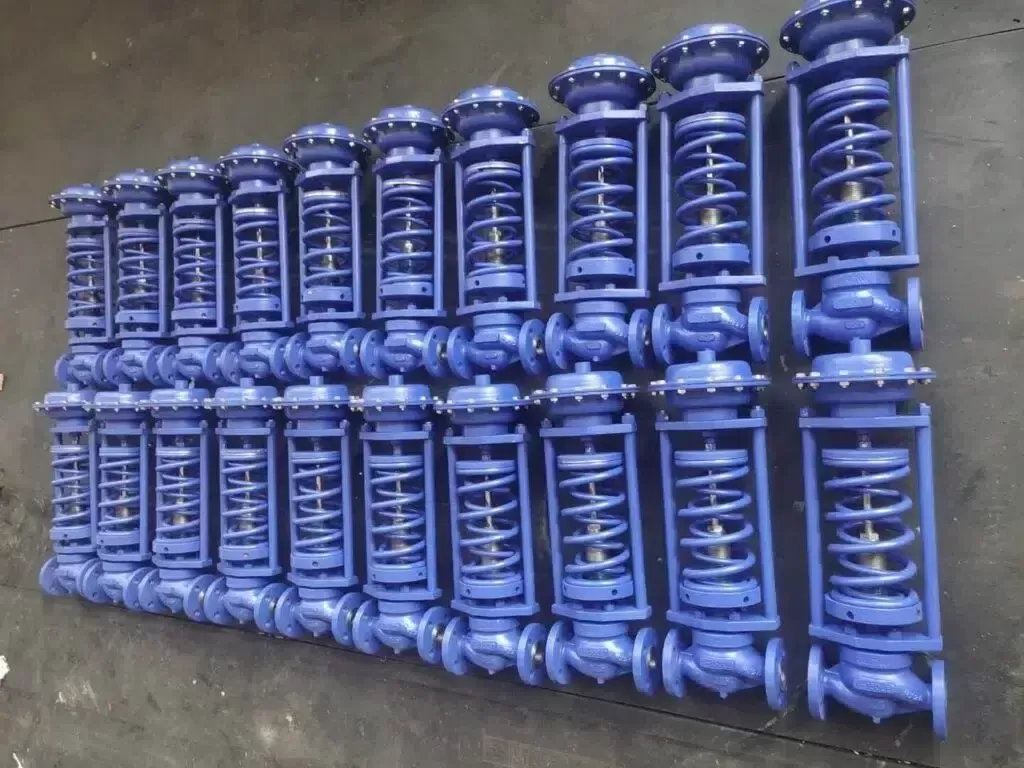Notifications

6 minutes, 13 seconds
-19 Views 0 Comments 0 Likes 0 Reviews

In process automation and fluid control, selecting the appropriate control valve is critical for ensuring performance, safety, and operational efficiency. Among the many valve types used in industry, pneumatic control valves and self-operated control valves are often compared due to their distinct operating principles and applications. Understanding how these valves work, their advantages, limitations, and ideal use cases helps engineers and plant operators make informed choices tailored to their systems.
This article provides an in-depth comparison of pneumatic and self-operated control valves, covering their operation, design factors, applications, and performance characteristics.
A pneumatic control valve utilizes compressed air as its power source to modulate flow, pressure, temperature, or level within a system. It primarily consists of a valve body coupled with a pneumatic actuator. The valve receives control signals—commonly 4–20 mA or 0.2–1 bar—via a positioner that adjusts the actuator accordingly. The actuator moves the valve plug or disc, regulating the flow path to maintain desired process parameters.
Key Features:
Requires an external compressed air supply and control signal.
Rapid response to control input changes.
High precision in flow and pressure regulation.
Suitable for dynamic and frequently adjusted control loops.
Self-operated control valves function independently without external power or control signals. They use the process medium’s own pressure or temperature to drive the valve’s operation via built-in sensors such as diaphragms or bellows. These valves automatically adjust the valve opening to maintain set process conditions.
Key Features:
No need for external power or instrumentation.
Operates solely on process medium energy.
Best for stable systems with infrequent adjustments.
Common in pressure reducing, pressure relief, and remote applications.
1. Power Source and Control Method
Pneumatic: Uses compressed air and external signals for remote and automated control.
Self-Operated: Relies on process fluid energy; functions autonomously without external inputs.
Verdict: Pneumatic valves suit automated, remote-control environments; self-operated valves excel where infrastructure is minimal.
2. Control Accuracy
Pneumatic: High precision (±0.3% to 0.5%) thanks to advanced actuators and feedback systems.
Self-Operated: Lower accuracy (±5% to 10%) limited by mechanical sensing elements.
Verdict: Pneumatic valves are preferred for applications demanding fine control; self-operated valves fit less critical control needs.
3. Adjustment Flexibility
Pneumatic: Easily adjustable in real-time via control systems.
Self-Operated: Requires manual on-site adjustments, limiting flexibility.
Verdict: Pneumatic valves enable adaptive control; self-operated valves suit fixed or rarely changed settings.
4. Installation and Maintenance
Pneumatic: Requires air supply, control wiring, and periodic maintenance of actuator and positioner.
Self-Operated: Simple installation with minimal infrastructure and lower maintenance demands.
Verdict: Self-operated valves are ideal for remote or maintenance-sensitive locations.
5. Design and Layout Considerations
Pneumatic: Versatile installation options with flexible piping and orientation.
Self-Operated: Requires specific placement and pressure sensing arrangements for reliable operation.
Verdict: Pneumatic valves offer more installation flexibility; self-operated valves require careful layout.
6. Typical Applications
| Pneumatic Control Valves | Self-Operated Control Valves |
|---|---|
| Chemical & petrochemical plants | Pressure reducing stations |
| Power generation boilers & turbines | Steam heating supply |
| Water treatment & HVAC systems | Lubrication systems |
| Industrial automation | Remote gas pipelines |
Choose Pneumatic Control Valves If:
High accuracy and fast response are essential.
Automation infrastructure (air, control systems) is available.
Remote monitoring and frequent adjustments are required.
Handling complex fluids or varying process conditions.
Choose Self-Operated Control Valves If:
The process is stable with limited adjustment needs.
No external power or air supply is accessible.
A simple, cost-effective, low-maintenance solution is preferred.
Installation is in remote or difficult-to-access areas.
| Feature | Pneumatic Control Valve | Self-Operated Control Valve |
|---|---|---|
| Power Source | External (compressed air + signal) | Internal (process medium energy) |
| Control Accuracy | High (±0.3% to 0.5%) | Moderate to low (±5% to 10%) |
| Control Signal | Remote (DCS/PLC) | Local only |
| Adjustment | Dynamic, remote | Manual, on-site |
| Complexity | Higher | Simpler |
| Installation | Requires infrastructure | Minimal infrastructure |
| Maintenance | Regular service needed | Low maintenance |
| Typical Applications | Precision control loops | Pressure reduction, relief |
Pneumatic and self-operated control valves each serve distinct and important roles in fluid control systems. Pneumatic valves excel in precision, flexibility, and automation, making them ideal for complex, dynamic processes. Self-operated valves offer simplicity, autonomy, and cost-efficiency, suited to stable, low-maintenance applications often in remote locations.
Selecting the right valve type involves evaluating process control requirements, infrastructure availability, and operational conditions. Aligning valve choice with these factors ensures optimized system performance, safety, and longevity.Learn more about Google SEO.

